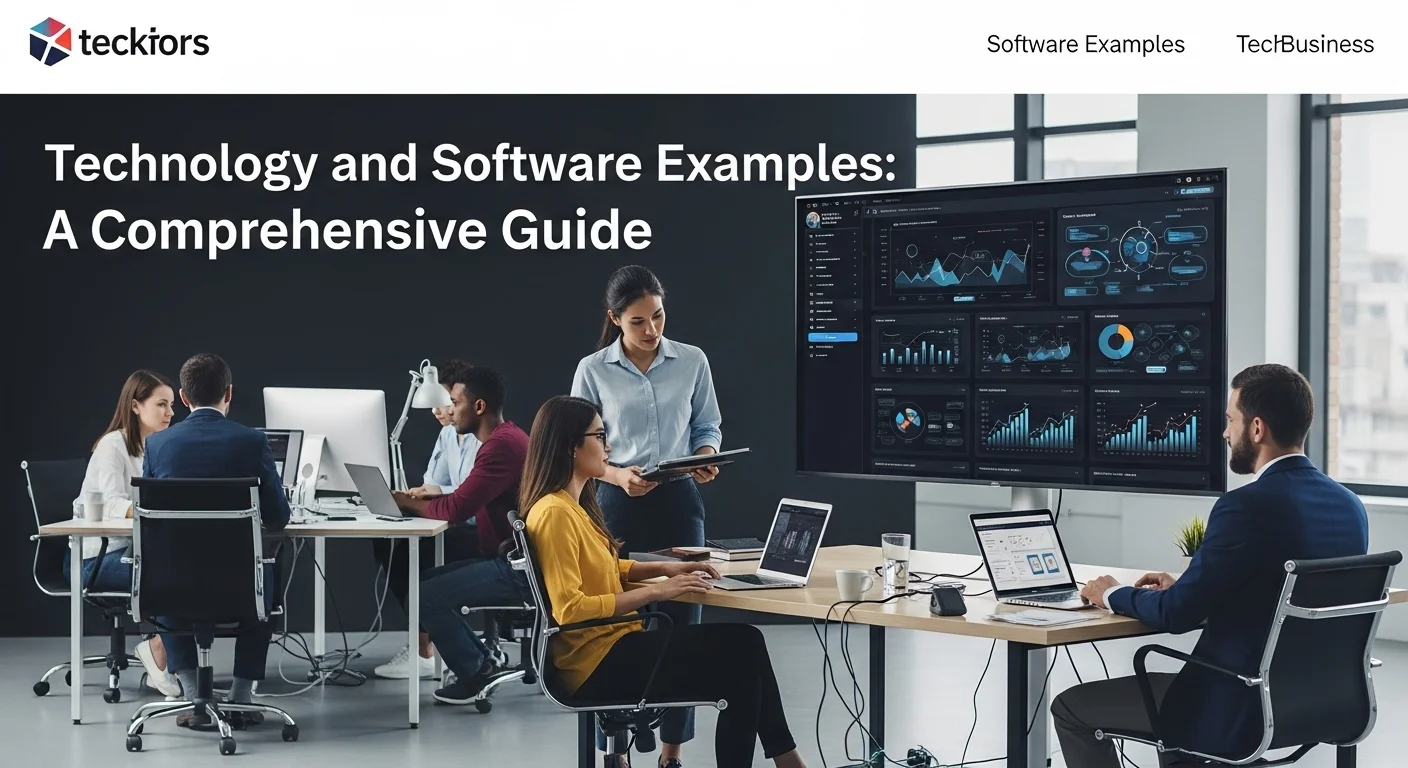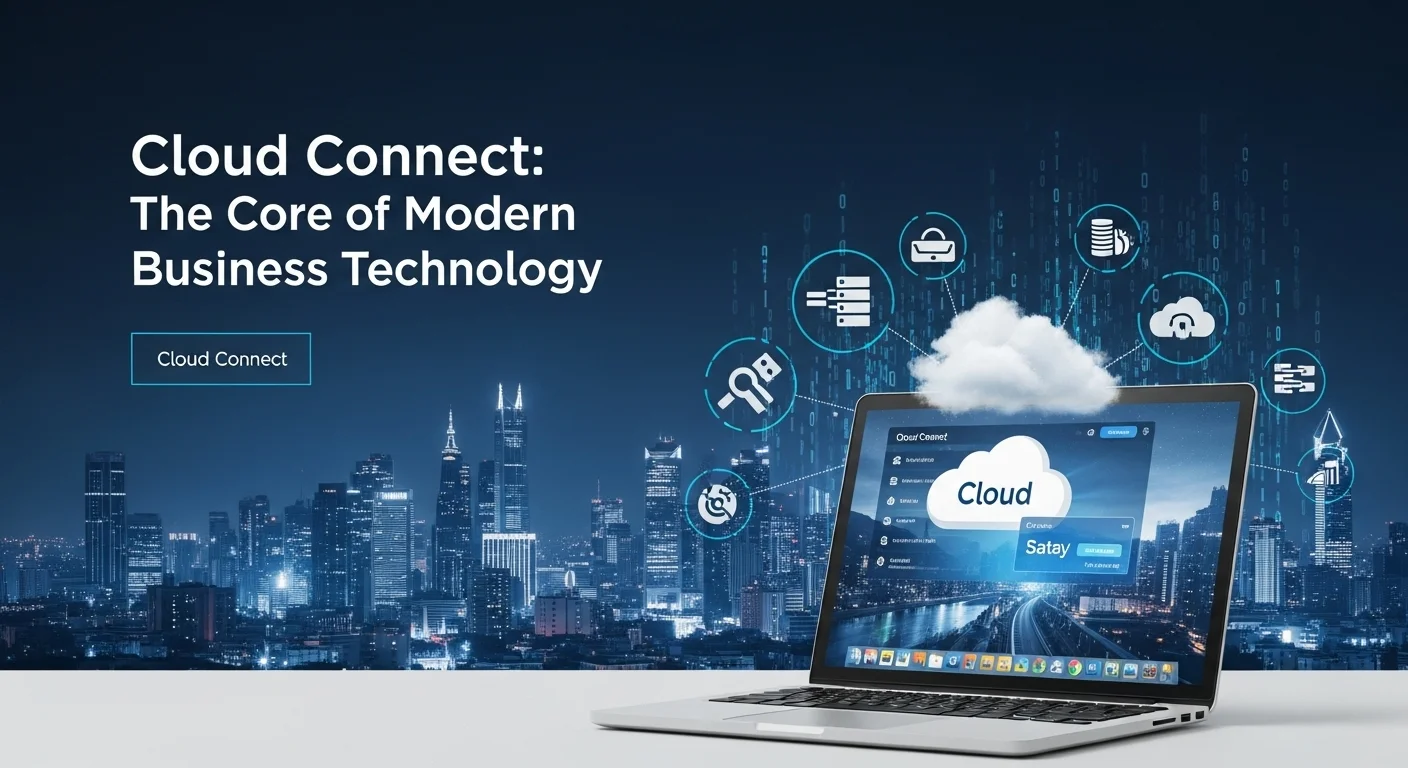What is Cloud Software? IaaS, PaaS & SaaS Examples Explained Simply

Executive Summary
Ever felt like you're drowning in a sea of tech terms like IaaS, PaaS, and SaaS? You're not alone. In my years as a cloud solutions architect, I've seen countless business leaders and tech professionals get tangled in the jargon. That's why I wrote this guide. We're going to cut through the noise and talk about what software, especially cloud software, really is and what it can do for you. We'll explore the three main cloud services—Infrastructure, Platform, and Software as a Service—using straightforward examples from giants like AWS and Google Cloud. My goal is to give you the clarity you need to understand how these tools work, from the basic building blocks to how they can drive real innovation and efficiency in your business. Whether you're looking to move your IT to the cloud, build a new app, or just find the right software tool, this article will give you the essential, human-friendly knowledge to make smart decisions.
Table of Contents
Table of Contents
- What is Software, and Why Does It Matter?
- The Rise of Cloud Computing and Its Service Models
- Exploring Real-World Cloud Software Examples
What is Software, and Why Does It Matter?
In our digital world, we talk about 'software' all the time, but it can feel like a vague, catch-all term. Let’s simplify it. At its heart, software is the intelligence that tells our hardware what to do. It’s the invisible brain behind the screen, the soul of the machine. Think of your laptop or phone; the physical device is the hardware, but the operating system (like Windows or iOS) and the apps you use (like your web browser or a photo editor) are all software. Understanding the different types of software is key to unlocking the true power of technology. It’s the engine that automates tedious tasks, connects us across the globe, and solves incredibly complex problems in every field you can imagine. For any business, finding the right software isn't just a tech decision; it’s a strategic move that can boost efficiency, spark innovation, and open up entirely new ways to make money. As I've seen firsthand, the right tool can completely change the game for a company.
The Rise of Cloud Computing and Its Service Models
One of the biggest shifts I’ve witnessed in my career is the move to the cloud. Cloud computing completely changed how we access and use software. Instead of buying and maintaining massive servers in your own office, you can now 'rent' computing power, storage, and software over the internet from providers like Amazon Web Services (AWS), Google Cloud, and Microsoft Azure. This has led to three main ways of delivering these services, each offering a different level of control. I like to explain it with a simple pizza analogy:
- Infrastructure as a Service (IaaS): This is like buying the pizza ingredients (flour, yeast, toppings) and using someone else's kitchen and oven to make it yourself. You have full control over the final product. The cloud provider gives you the fundamental building blocks—virtual servers, storage, networking—and you manage the rest. Prime examples are Amazon EC2, Microsoft Azure Virtual Machines, and Google Compute Engine. This is for those who want maximum control and flexibility over their tech environment.
- Platform as a Service (PaaS): This is like ordering a take-and-bake pizza. The dough and toppings are already prepared for you; all you have to do is cook it. PaaS provides a platform where developers can build and run their applications without worrying about the underlying servers or operating systems. They bring their code, and the platform handles the rest. Popular PaaS solutions include Heroku and AWS Elastic Beanstalk. It’s a developer’s dream, letting them focus on creating amazing apps.
- Software as a Service (SaaS): This is like going to a restaurant and having a pizza served to you. You don't have to worry about the ingredients, the oven, or the cooking. You just enjoy the final product. SaaS delivers ready-to-use software over the internet, usually on a subscription basis. We use these every day: think Google Workspace (Gmail, Docs), Salesforce for managing customer relationships, or Slack for team chat. They are perfect for businesses that want a powerful tool without the headache of managing it.
Exploring Real-World Cloud Software Examples
To really get it, let's look at how these services are used in the real world. Think about Netflix. They are a massive user of IaaS. They rely on AWS's global infrastructure to stream movies to millions of people simultaneously. It would be incredibly expensive and complex for them to build and manage that many data centers themselves. With IaaS, they can scale up or down based on viewer demand, paying only for what they use. It’s a classic case of leveraging raw infrastructure for massive scale. On the SaaS side, Microsoft 365 is a perfect example. It gives businesses access to Word, Excel, and Teams from anywhere, on any device, all managed by Microsoft in the cloud. It makes collaboration a breeze. For developers, a PaaS platform like Heroku is a game-changer. I remember helping a startup go from a simple idea to a live application in a matter of days using Heroku. It completely bypasses the weeks it used to take to set up servers. The beauty of these cloud software examples is that they make powerful technology accessible to everyone. A small startup can now use the same world-class infrastructure as a Fortune 500 company, which levels the playing field and fuels incredible innovation.

A Practical Guide to Software in Business
Let's take a deeper dive into how these software solutions actually work and how to choose the right one for your business. Making the right choice isn't just a technical decision; it's a business strategy. For years, the only option was 'on-premise' software—you bought it, installed it on your own servers, and were responsible for everything. It meant a huge upfront cost and a dedicated team to keep it running. The cloud turned this model on its head, offering flexibility and cost savings that were previously unimaginable. The key is understanding the trade-offs between IaaS, PaaS, and SaaS, so let's break down the technical side of things in a way that makes sense.
A Closer Look: How IaaS, PaaS, and SaaS Work
Think of these three models as layers of a cake. Each one builds on the one below it, giving you a different level of control versus convenience. As a solutions architect, my job is often to help clients figure out which layer of the cake they need.
IaaS (Infrastructure as a Service): The Foundation
IaaS is the base layer. You get the raw ingredients of computing: virtual servers, networking, and storage. It's like having the keys to a virtual data center. Behind the scenes, the provider uses something called a 'hypervisor' to carve up physical servers into multiple virtual machines (VMs). You can then install any operating system or application you want on these VMs. The big players here are AWS EC2, Azure VMs, and Google Compute Engine. Companies choose IaaS when they need total control. Maybe they have an old, complex application that needs a very specific environment, or they're processing massive amounts of data for analytics. The biggest business advantage? It turns a massive capital expense (buying hardware) into a predictable operating expense (a monthly bill). It’s about paying for what you use and having the power to scale on demand.
PaaS (Platform as a Service): The Developer's Playground
PaaS adds another layer of convenience. The provider manages the servers, the operating systems, and all the tedious maintenance, leaving developers with a perfectly prepped environment to build, test, and deploy their software. I've seen development teams increase their speed by tenfold using PaaS platforms like Heroku or Red Hat OpenShift. These platforms come with built-in tools for different programming languages (like Python, Java, or Node.js) and automate huge parts of the development process. The business strategy here is all about speed. PaaS allows companies to get new ideas and features to market much faster, which is a massive competitive advantage. It helps create a culture of rapid innovation.
SaaS (Software as a Service): The Ready-Made Solution
SaaS is the top layer, the finished product. It's a complete software application that you access through your web browser. The provider handles absolutely everything behind the scenes. We use SaaS all the time, often without thinking about it—Gmail for email, Slack for communication, Salesforce for customer management. From a business perspective, the strategy is simple: get access to world-class software without the overhead. You pay a subscription fee and get a powerful tool that just works. It’s the perfect choice for standard business functions like accounting, HR, or customer support, allowing your team to focus on their core jobs instead of managing software.
Making the Right Choice for Your Business
So, how do you choose? It really boils down to your goals, resources, and technical expertise.
- Choose IaaS if: You need maximum control, have a skilled IT team, and want to manage your own infrastructure. Think of a large e-commerce site that needs to handle huge, unpredictable traffic spikes.
- Choose PaaS if: Your main goal is to build and ship custom applications quickly. You have a team of developers who you want to empower, not burden with server management. A tech startup building a new mobile app is a perfect fit.
- Choose SaaS if: You need a proven, out-of-the-box solution for a specific business need and want to minimize IT costs and complexity. A growing business that needs a professional CRM system would go with a tool like Salesforce.
It's also important to remember you don't have to pick just one. Many businesses I work with use a mix-and-match approach. They might use a SaaS solution for their email, build a unique customer-facing app on a PaaS platform, and run heavy data analysis on an IaaS environment. This hybrid strategy lets you pick the best tool for every job, optimizing for cost and performance. The world of cloud software is always changing, with providers adding new features every day. The key to success is to stay curious, assess your needs honestly, and choose the path that best supports your business vision.

Expert Tips for Mastering Your Cloud Software Experience
Choosing a cloud service is just the beginning. To truly get the most out of it, you need a smart strategy. Over the years, I've seen companies thrive—and some stumble—based on how they manage their cloud environment. Here are some hard-won lessons and best practices for whatever service model you're using. Think of this as my personal cheat sheet for maximizing value and avoiding common pitfalls.
Best Practices for IaaS: Control and Responsibility
With IaaS, you have all the power, which also means you have all the responsibility. Managing your own infrastructure requires discipline.
- Make Security Your Top Priority: In the cloud, security is a shared job. The provider secures the physical data center, but you are responsible for everything you put on it. I always tell my clients to think 'security first.' This means setting up firewalls, tightly controlling who has access (using IAM policies), and religiously patching your systems to protect against the latest threats. Don't be the one who learns this lesson the hard way.
- Watch Your Wallet: The pay-as-you-go model is fantastic, but it's easy to lose track. I once saw a client’s bill triple in a month because a developer left a dozen powerful servers running by mistake. Use the cost management tools your provider offers. Set up alerts, use cost-saving plans for predictable workloads, and make sure you're 'right-sizing' your servers so you're not paying for power you don't need.
- Automate Everything You Can: The pros don't click buttons in a web console; they write code to build their infrastructure. Using tools like Terraform or AWS CloudFormation allows you to define your entire setup in code. This makes it repeatable, less prone to human error, and incredibly easy to scale. Automation is your best friend in a complex IaaS environment.
Best Practices for PaaS: Supercharge Your Development
PaaS is all about speed and agility. To really benefit, you need to think like a modern developer.
- Embrace a CI/CD Pipeline: Continuous Integration and Continuous Deployment (CI/CD) is a must. This is an automated process that builds, tests, and deploys your code every time you make a change. It allows you to release new features faster and with more confidence. Most PaaS platforms like Heroku have this built-in, so use it!
- Build for Scale and Failure: The platform handles scaling, but your application has to be designed for it. Build 'stateless' applications that can easily be duplicated to handle more traffic. And always design for failure. Assume a server will crash and build automated recovery processes. Spreading your app across multiple 'availability zones' is a simple way to protect against outages.
- Keep an Eye on Performance: Just because you don't manage the servers doesn't mean you can ignore performance. Use Application Performance Monitoring (APM) tools to see how your app is behaving. They'll help you spot bottlenecks and fix bugs before your users even notice them.
Strategies for Any Cloud Service
No matter which cloud services you use, these universal rules apply.
- Know Your Data, Protect Your Data: Understand where your data lives and what rules (like GDPR) apply to it. Encrypt your sensitive data both when it's moving over the network and when it's sitting on a disk. And please, back up your data regularly and test your recovery plan. A backup you've never tested isn't a backup; it's a prayer.
- Avoid Vendor Lock-In: Cloud providers have amazing ecosystems, but relying too much on one provider's unique services can make it very difficult to leave later. Whenever you can, use open-source technologies like Kubernetes for managing containers. This gives you the flexibility to move your workloads if you ever need to.
- Look to the Future: The cloud is evolving at lightning speed. Keep an eye on trends like 'Serverless' computing (which abstracts away even more of the infrastructure) and the incredible AI/Machine Learning services being built into these platforms. For a great resource on what's happening in the cloud-native space, I always recommend the Cloud Native Computing Foundation (CNCF).
By following these strategies, you can turn the cloud from a simple utility into a powerful engine for innovation. The journey through the different types of software and cloud services is one of constant learning, but the payoff in efficiency, agility, and growth is absolutely worth it.
Expert Reviews & Testimonials
Sarah Johnson, Business Owner ⭐⭐⭐
The information on software examples is accurate, but I wish there were more practical examples for small business owners like me.
Mike Chen, IT Consultant ⭐⭐⭐⭐
A helpful article on software examples. It clarified a lot for me, though some of the technical concepts could have been explained a bit more simply.
Emma Davis, Tech Expert ⭐⭐⭐⭐⭐
Fantastic article! It's a very thorough look at software examples. It was incredibly helpful for my specialization, and I found it perfectly clear.



